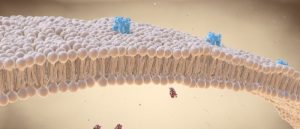Modified ‘nanobubbles’ improve drug delivery and treat inflammatory conditions

Researchers have adapted extracellular vesicles (VR), nano-sized bubbles excreted by cells, to effectively deliver therapeutic drugs.
EVs are released by cells and carry numerous biological signals around the body as a form of intercellular communication. Researchers from the Karolinska Institutet (Stockholm, Sweden), led by senior author Samir EL Andaloussi, have modified EVs to transport protein-containing drugs more precisely around the body. This study could help dramatically improve the therapeutic delivery of a number of drugs.
These naturally produced vesicles are capable of passing through membranes in the body, such as the blood–brain barrier, and delivering specific materials into tissues that many current drug-delivery systems are unable to access. Intrigued by the capabilities of EVs, the researchers attempted to optimize them for the delivery of therapeutics for different disease types.
The researchers first focused on inflammatory diseases by targeting TNF-α and interleukin 6 (IL-6), which form in inflammatory conditions such as multiple sclerosis, contributing to inflammation and tissue damage. To target these molecules, the membranes of EVs were coated with therapeutic proteins that bind to TNF-α and IL-6, acting as decoy receptors to sequester them and decrease inflammation.
 DNA nanostructures manipulate cell membranes for optimized drug delivery
DNA nanostructures manipulate cell membranes for optimized drug delivery
Researchers use lipid-binding DNA nanostructures to manipulate lysosomes and improve their drug delivery capabilities.
“We used different methods to optimize the expression of receptors and tested the different variants of EVs in inflammatory cell models to identify which strategy gave the greatest anti-inflammatory effect,” explained Dhanu Gupta, first author of the study.
These therapeutic EVs were then used in three different animal models for sepsis, multiple sclerosis and inflammatory bowel disease. In the sepsis and inflammatory bowel disease animal models, survival rates were significantly improved with the administration of the EVs, indicating that the inflammatory response was considerably reduced. In the multiple sclerosis animal model, there was a substantial reduction in typical neurological symptoms seen in flare-ups.
“Our findings are an important step in the right direction and demonstrate that EVs can be a promising treatment for inflammation,” says Samir El-Andaloussi “but the technique also has great potential for many other diseases.”